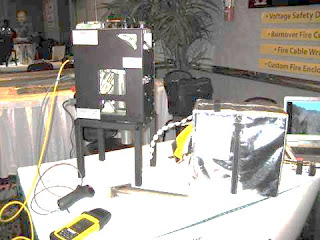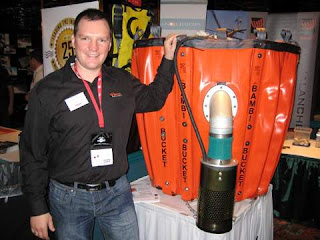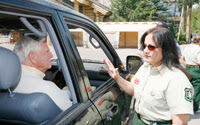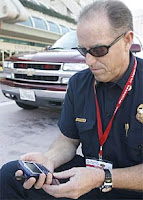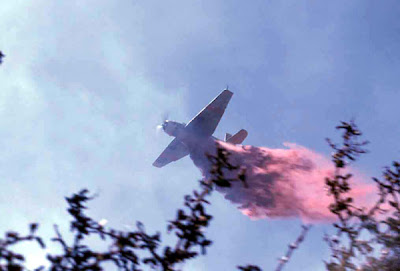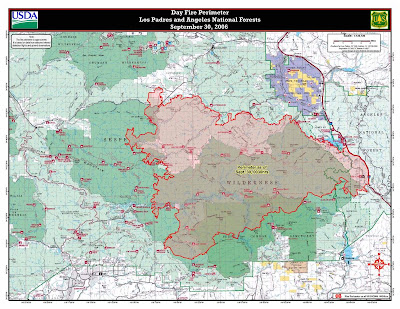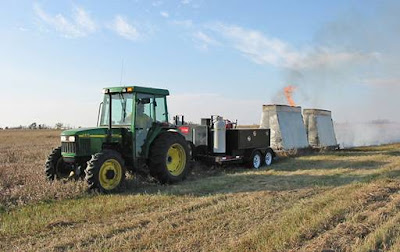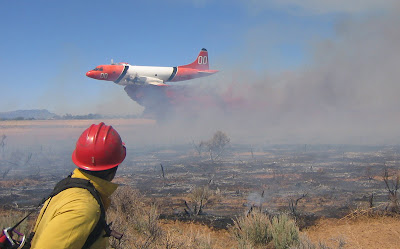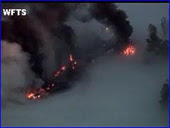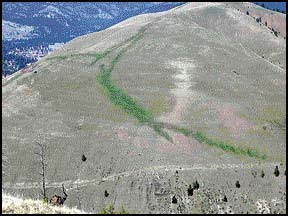 The Federal Aviation Administration has been saying for a couple of years that they want to evict the Northern Great Plains Interagency Dispatch Center from their facility at the Rapid City Regional Airport in South Dakota. In 2002 the state and federal fire agencies in the greater Black Hills area, including portions of South Dakota, Nebraska, North Dakota, and Wyoming, joined forces to consolidate dispatch services. They received permission to gut and remodel an old unused building at the airport, spending about
The Federal Aviation Administration has been saying for a couple of years that they want to evict the Northern Great Plains Interagency Dispatch Center from their facility at the Rapid City Regional Airport in South Dakota. In 2002 the state and federal fire agencies in the greater Black Hills area, including portions of South Dakota, Nebraska, North Dakota, and Wyoming, joined forces to consolidate dispatch services. They received permission to gut and remodel an old unused building at the airport, spending about It is now used by the interagency fire dispatch center, state highway patrol, and several other state and federal agencies. Interagency fire training classes are held in the large expanded dispatch/training room in the winter. There is a great deal of unused land surrounding the airport. There is no need to force the interagency dispatch center to abandon their recently remodeled facility so another airplane hanger can be placed on the site.
Here is a portion of the story by Dan Daly in the Rapid City Journal:
"Work continues on a new hangar in what used to be the parking lot of the old Rapid City Regional Airport terminal. Nearby, the Northern Great Plains Interagency Fire Dispatch Center, inside the old terminal, seems almost surrounded by concrete aircraft aprons.
There’s still room for automobiles in the remaining parking lot, and the dispatch center is still operating in the old terminal.
But how long it can stay? That remains the subject of ongoing talks between the airport board, Rapid City Mayor Alan Hanks, Gov. Mike Rounds’ office and the Federal Aviation Administration.
Hanks said he’s been trying to persuade the FAA to let the dispatch center stay at the airport. The center has been instrumental in getting fire crews and other resources to fires early, preventing them from becoming widespread wildfires, he said.
“In my mind, it’s extremely important that we maintain that dispatch center to provide fire protection, not only for the Rapid City area but for the entire Black Hills,” Hanks said.
Hanks, Rounds and the airport board want the dispatch center to stay, but since 2006 the FAA has been pressing Rapid City Regional Airport to terminate the center’s lease. The center has been renting its space without a lease since last year.
According to the FAA, the center -- staffed by the South Dakota Wildland Fire Suppression Division and other state and federal fire agencies – doesn’t fit the FAA’s requirement that airports lease space primarily for aeronautical uses.
The state of South Dakota disagrees, said Jason Glodt, a senior policy adviser to Gov. Mike Rounds. He said the requirement is vague, and the dispatch center’s firefighting work does involve aviation uses. He said the state leases single-engine air tankers that are staged at Rapid City Regional Airport during the fire season. The state could end up buying its own tankers in the future.
While pressing that argument, Glodt said, the governor’s office is also asking the FAA for more time. “It’s our understanding we’ll have at least until 2010,” Glodt said."





